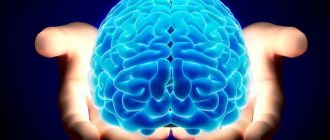Exposure to hypnosis
- a method that helps eliminate the cause of alcoholism, since hypnosis affects the human psyche and consciousness.
But hypnosis
hypnosis is different. When a patient is offered hypnosis coding for alcohol, most often it means coding according to the Dovzhenko method: the person is given an attitude based on the fear of drinking. This method limits the desire to drink, but does not solve the problem of addiction entirely. It only helps to block the chain of repeated actions.
There are other types of hypnotechniques that - ONLY! — coupled with psychotherapy sessions give a person the opportunity to understand the causes of his addiction, to realize his fears and experiences that led to excessive use.
Hypnosis according to Dovzhenko for alcoholism: does it help or not?
It should be understood that very few actually get to the methods of therapy and rehabilitation, to hypnosis for alcoholism
using the Dovzhenko method, to working with a psychologist, especially when it comes to an independent decision. The vast majority of addicts come to the doctor's office under pressure from relatives or due to current circumstances (loss of family and job, serious health problems, tragic events with a fatal outcome, and so on). Almost no one wants to start treatment for alcoholism of their own free will. And we can say this within the framework of the first stage of alcoholism - at this stage a person still has a chance to realize his behavior and think.
At the second and especially the third stage of addiction, an alcoholic will definitely not go to treatment on his own. He simply does not think in such categories: his psyche is crippled and oriented toward completely different values and goals. In this case, it is possible to help a person get rid of addiction only with the help of specialists and persistent persuasion of relatives. It is necessary to develop an intervention scheme: when the narcologist thinks through options for communicating with the patient, he develops an approach to gradually persuade the person to the need for treatment. At the initial stage of treatment, almost no one offers hypnosis coding according to Dovzhenko, only as part of complex coding (medicines, laser coding or hardware coding plus hypnosis).
Encoding options
- Injection
FROM 4000 rub.- Examination and consultation with a doctor.
- Determination of dose based on length of addiction, age and concomitant diseases.
- The preliminary period of sobriety is three days.
- The injection is administered by a nurse under medical supervision.
- Testing the reaction to alcohol, a story about the consequences of drinking alcohol.
- Two-week observation of the patient after the procedure.
- Ability to select the duration of the encoding effect.
- Possibility of conducting examinations in the presence of diseases.
- Sewing
FROM 4500 rub.
- Surgery performed by a certified surgeon.
- High reliability and efficiency of the method.
- Encoding is valid for up to three years.
- The patient must remain sober for three to five days before the procedure.
- Preliminary appointment with a doctor.
- Determining the required dosage, based on the history of alcohol addiction, age, and disorders in the body.
- Selecting the encoding duration.
- Testing reactions to alcohol, explaining the consequences of abuse.
- Support for the patient for several weeks after stitching.
- Possibility of diagnostics for related problems.
- Dovzhenko
FROM 8000 rub.
- In the center, encoding using the Dovzhenko method is possible.
- No drug intervention during the procedure.
- You must abstain from alcohol for five days.
- The presence of chronic diseases and a person’s age do not interfere with coding.
- The procedure lasts one and a half to two hours.
- The patient is helped to understand the psychological root cause of addiction.
- There are no negative consequences for all body systems.
- Appointment and examination by the attending physician.
- Two-week support for the patient after the procedure.
- Double block
from 7000 rub.
- Personal selection of medications and psychotherapeutic techniques.
- Can be performed on drunken patients with severe alcoholism.
- Relieves physiological and psycho-emotional cravings for alcohol.
- You must remain sober for five days before the procedure.
- Indicated for patients prone to breakdowns (when other methods do not work).
- Explaining the consequences of drinking alcohol.
- Comprehensive diagnostics of the body's condition.
- Consultation with a narcologist, examination.
- Accompanying the person for several weeks after the procedure.
How to make a person coded from alcoholism using hypnosis?
Consultations on hypnosis methods and selection of a coding center - let's start treatment today!!!
You cannot force a person: it is prohibited by law. And although Russia wants to return sobering-up stations, this scheme will only worsen the fear of addicts in front of medical institutions. Fear of crude methods of “help” is still entrenched in society. Many people view narcologists as charlatans and crooks: they do not believe that doctors can help, nor that there is a need for treatment in principle.
The psyche of a person with alcoholism does not function in the same way as the psyche of a healthy person.
For a person who is not burdened by addiction, it seems that nothing is easier than gathering the will into a fist and quitting drinking. But addiction is formed according to a very complex pattern, involving social, physiological, and psychological factors. This whole tangle tightly “solders” mental reactions into a single mechanism of action. And strict directive techniques, isolating the patient from his former social circle and codependent relatives is the first and necessary step in the fight against alcoholism. In this sense, hypnosis according to Dovzhenko, according to reviews, is the most important and working method. It, of course, has its shortcomings.
1. A person is afraid to drink, but does not understand what to do with the obvious desire to sip alcohol. In practice, those encoded by hypnosis and who have not used any other methods of treatment often break down during the period of remission, or even earlier.
2. If a person is simply coded, but is not told about the addiction or other methods of work, the person remains in the dark, which can ultimately lead to disappointment in coding as a whole.
Hypnosis coding for alcoholism
(both according to the Dovzhenko method and medication) is always a temporary measure. She is able to stop a person and give him time to identify himself. But almost never a person can understand the reasons on his own. At best, he simply gets used to not using. But if the mechanisms that caused alcoholism to begin turn on again (for example, a stressful situation begins), the person will take up a glass again.
Types of therapy
There are several types of hypnotherapy for alcohol addiction:
- Neurolinguistic programming (NLP).
- Anchor (Ericksonian) hypnosis.
- Hypnosuggestive therapy (classical hypnosis).
- Autogenic training.
With alcoholism, a person’s self-destruction mechanisms are turned on, so he is able to get pleasure only when he abuses alcohol, which ultimately leads to the destruction of the body and personality degradation. Hypnotherapy seeks to extract positive desires from the subconscious, which allow a person to receive satisfaction and joy from other sources not related to the consumption of alcoholic beverages.
Without the help of a hypnotherapist, it is difficult for a patient with addiction to deal with self-destructive attitudes and psychotraumas formed in childhood. This is not always possible even for a specialist. A complex psychological study of negative attitudes associated with a lack of self-love is required. The hypnotherapist puts the client into a trance state, in which they together get to the core of the problem and remove its deep roots (regressive hypnosis).
The method of hypnotherapy solves many psychological problems (addictions, fear, phobias). Hypnologist and author of numerous publications Nikita Valerievich Baturin helps overcome social phobia, addiction, depression and return joy to the client’s life. For this, different techniques are used, depending on the client’s psychotype and the problem being worked on.
NLP
This is a technique that restores a person’s psyche, and does not force him to perform any actions. Even after completing a course of drug treatment, an alcoholic has a desire to again experience the pleasure of drinking alcohol, since the desire to live in a state of intoxication cannot be cured by taking any pills. The feeling of euphoria from drinking alcohol remains in the memory of a person with addiction, and he will strive to achieve it again.
Using the NLP technique, the self-destructive program is removed from the patient’s subconscious, and instead the natural attitude of receiving pleasure from other sources is “overwritten”, creating the need to lead a sober lifestyle. The patient is taught to overcome stressful conditions and experience the joy of existing without alcohol.
Ericksonian hypnosis and NLP are related areas. The difference between them is that NLP implies strict adherence to the methodology, and Ericksonian hypnosis allows the hypnotherapist to change treatment tactics at any time depending on the patient’s reaction to it.
Anchor hypnosis method
Ericksonian (anchor) hypnosis helps a person with addiction form a mindset for a healthy lifestyle. In this case, the hypnotherapist creates a mark (anchor), with the help of which a certain behavior program is launched or blocked. An aversion to alcohol is formed thanks to tactile, visual stimuli and audio anchors.
Ericksonian hypnosis is often combined with the method of psychocorrection, which speeds up the rehabilitation process. According to reviews, alcohol coding with hypnosis is sometimes used in combination with pharmacotherapy to obtain a more reliable result.
Classic hypnosis
Hypnosuggestive therapy includes several stages: a preparatory stage, a hypnosis session and a rehabilitation period. During the procedure, the hypnotherapist gives instructions using clear phrases aimed at relieving addiction. Awakening is carried out slowly, and at the end the doctor gives the patient the instructions to feel excellent.
Contact with the patient in a state of sleep occurs using the sound method. The effectiveness of this method of hypnosis for alcoholism, according to reviews, is quite high. To a large extent, it depends on the suggestibility of the person and the established trust between the hypnotherapist and the patient.
Autogenic training
The basis of the technique is self-hypnosis, that is, the use of the personal potential that every person has. It is understood that the patient can solve his psychological problems himself with minor intervention from a specialist. A psychologist-hypnologist teaches a patient with addiction to correctly formulate settings and perform exercises.
Try one of the most popular audio trances on YouTube:
Learning to meditate and take control of your life is not easy, but it is possible. Further developments depend on determination and a conscious attitude to the problem. In the last stage of alcoholism, autogenic training will not produce results, since personality degradation is already occurring.
What is hypnosis from alcohol and suggestion: why is all this needed?
The problems that led to addiction are never in the realm of awareness.
In this case, everyone would stop drinking by simply sitting and thinking about why they want it. But it doesn't work that way. Addiction is based on childhood fears, entrenched beliefs, acute experiences, and mental trauma. In order to eliminate addiction and separate the desire to drink from experiences, you need to bring experiences to the surface, to the level of awareness, and eliminate them. In parallel, work must be done to block the physiological habit of abuse.
Only in this case, coding for alcoholism using hypnosis, along with various methods of psychotherapy and psychology, will give the expected effect.
During the process of hypnosis, a person will be able to remember traumatic events, even those that happened a long time ago, almost flew out of his head or were carefully “blocked” by the psyche. Our psyche is always trying to protect us from traumatic memories, but they do not go away, behavior is simply distorted, which in the future encourages a person to behave in a certain way.
For example, a person in childhood, seeing how his father drank and offended his mother, condemns him, but also loves him. It is difficult for a child to cope with such a complex experience, and he “glues together” disparate events and emotions in his mind and stops perceiving his father’s behavior as negative. In the future, he will repeat his father’s actions, but will experience not joy, but pain, anger, guilt, and to relieve the feeling of guilt, he will drink alcohol. That’s why they talk about heredity: the reasons why families drink for generations lie not in the area of genetics, but in the area of traumatic upbringing. Therefore, it is necessary to treat all family members for alcoholism: both dependent and codependent.
Coding against alcoholism using the method of hypnosis and suggestive (persuasive) influence techniques helps to open up a person and give him the opportunity to tune in to his sense of self. In a sense, any work with a psychotherapist already implies some elements of hypnosis - the very fact of suggestive influence is inevitable in some practices.
How to treat alcohol addiction using hypnosis
Doctors choose the method of treating alcoholism using hypnosis. After passing a medical examination and working with a psychologist, specialists determine the degree of subordination to hypnosis and prescribe the necessary method of hypnocoding.
Treatment of alcoholism using hypnosis occurs in five stages:
- Medical examination to determine the presence of alcoholic substances in the patient’s body. If alcohol elements are detected, the body is cleansed.
- Putting a person into a hypnotic trance;
- The hypnologist “instills” in the patient an aversion to alcoholic beverages (taste and smell);
- Withdrawal from hypnosis;
- Three-day observation of the patient in a hospital or outpatient setting.
Each method of hypnosis for alcoholics has its own specific features, for example:
- In classical hypnosis, the therapist helps the patient develop a subconscious aversion to drinking;
- Ericksonian hypnosis also involves the development of an aversion to drinking, but has a stronger effect on the person. This method is suitable for people who have a reduced threshold for hypnotic sensitivity.
- During neurolinguistic programming, the patient is taught the idea that it is possible to feel happiness in life without drinking alcohol. During this method, the doctor identifies a cause-and-effect relationship between the patient and the onset of binge drinking and eliminates the “point” of the onset of alcoholism.
- The method of hypnosuggestive hypnosis is an indirect approach to giving up alcohol. The hypnologist does not force you to stop drinking, but through friendly communication pushes the patient to an independent and conscious decision.
- The anchoring method involves finding a positive anchor that will keep them sober.
- The most famous method of hypnosis is the Dovzhenko method. Coding occurs without the use of alcohol aversion methods. In this case, the doctor works more as a psychologist than as a hypnologist.
If you are tired of the alcoholism of your loved ones or relatives or you yourself have realized that you cannot fight the addiction, then you need to immediately contact professionals. Coding alcoholism with hypnosis in Moscow will help you return to a normal, vibrant and healthy life.
As you know, scientists have not yet been able to fully study the human brain or even come close to solving this greatest mystery. But already the developments that are available in science make it possible to use hypnosis for the treatment of alcohol and drug addiction, gambling addiction and smoking.
Alas, many residents of our country are still distrustful of this encoding method. We bring to your attention several popular misconceptions about hypnosis coding for alcoholism:
- You can force him to undergo treatment. Relatives of an addict, in order to help him get rid of an unhealthy addiction to alcohol, often force a loved one to go to a hypnosis session through coercion, blackmail, and are not at all interested in his opinion on this matter. As a result, the effect of hypnosis encoding may not occur at all or may not last as long as desired. Persuade - yes, motivate - yes, force - no! This does not work!
- Placebo effect and nothing more. The opinion that all medicinal and psychotherapeutic methods, without exception, work only due to the placebo effect, intense fear of the serious consequences of drinking alcohol, is fundamentally incorrect. In fact, an experienced hypnotherapist does not “break” or depress the patient’s psyche, but only minimally adjusts the consciousness and subconscious in order to influence preferences and motivate to lead a healthy lifestyle. This is the only way to get a high-quality, sustainable result from coding and psychotherapy sessions.
- Mental problems after encoding. Many are sure that after being put into a hypnotic state and determined to give up alcohol, the encoded person may subsequently have serious mental problems. In fact, during the session the hypnotherapist does not perform any actions aimed at “zombifying” the patient, does not inject drugs into the patient, does not fumigate the room with substances with intoxicating properties, etc. Mental problems can indeed arise, but only due to the prolonged effect of ethanol on the brain and central nervous system. That is, no one has canceled withdrawal syndrome as a side effect of alcoholism, and the depressed mood, aggressiveness, and irritability that may occur in the first months after quitting alcohol are completely unrelated to the coding procedure.
We invite you to read: Alcoholism risk factors for development
There is not enough space in this article to list all the myths and fantasies associated with the use of hypnosis. In fact, even in a hypnotic state, it is impossible to suggest to a person something that he rejects on a subconscious level. That is why it is important, before encoding, to motivate the patient to consciously refuse to drink alcohol, otherwise hypnosis will not bring the desired result.
Trance: how to code for alcoholism using hypnosis
Hypnosis
is an altered state of consciousness that does not exclude recognition of what is happening.
Empty fears that under the influence of hypnosis a person will switch off and fall into a trance (unconscious behavior) are unfounded. Hypnosis
is also called trance.
In a state of hypnosis
the person is just relaxed, inclined to listen complacently to the words of the psychotherapist, and can accept the dialogue without criticism. This is a state of increased suggestibility, but a state of wakefulness, and not “waking sleep.”
Hypnosis for alcoholism
will not turn anyone into a zombie; with the help of hypnosis it is impossible to program a person to frankly absurd actions. A video about states when a person blindly obeys the orders of a hypnotist is an illustration of severe trance states when a person’s critical perception and those areas of the brain that are responsible for logical thinking, memory, and adequate actions are disabled. In medical practice, the patient is never put into this type of trance.
The trance state is familiar to many from everyday situations. For example, you may think and not notice how you got to the store. A person under hypnosis is in approximately the same state. He hears everything, sees everything, but some of the words and phrase structures are not directly perceived by consciousness, and are even forgotten. Under the influence of alcohol and drugs, a person, by the way, also falls into a trance state, but physiological processes are also involved. The depth of trance depends on many factors: settings, state, concentration, influence techniques.
The hypnotherapist must have very high qualifications and work experience in order to competently and delicately, in a state of hypnosis, build new patterns of behavior into the patient’s consciousness or remove existing ones and deprive them of their negative connotation. According to reviews, coding for alcoholism using hypnosis bears fruit, but a person must reach this stage consciously. In this state, it is easy for a person to convey any thought that will become fixed and will emerge simultaneously with the emotions and images that the hypnotherapist worked with. Of course, you can instill negative formulations (“If you drink, you will die”), or you can work through the feelings and fears that have surfaced and deprive them of their emotional component. That is, the patient will retain memories of the event, but they will no longer bother him.
Conduct hypnosis
- a very responsible job. And trusting your psyche to non-professionals is dangerous for your mental health.
Consequences of coding for alcoholism using hypnosis
very noticeable: after a competent hypnosis session, a person will feel freer and less frustrated (tense) in general.
Coding alcoholism with hypnosis: theoretical foundations
Hypnosis is a procedure in which a specialist, using a variety of psychotherapeutic techniques, ensures that the patient feels changes in his feelings, perception of the world around him, thoughts and behavior.
During the session, the doctor puts the person into a trance - a state of relaxation, calm and well-being. People react differently to hypnosis. Some describe the experience as an altered state of consciousness, others as focusing attention on a specific problem, but with a feeling of complete peace. Contrary to popular belief, during a session a person usually becomes aware of where he is, who he is and subsequently remembers what happened during the procedure.
Important! Hypnotherapy does not mean complete submission of the will, but it facilitates the perception of suggestions, helps the doctor “break through” numerous blocks, problems, personal complexes, stress, in general, everything that is the root cause of alcohol addiction.
The difference and essence of Ericksonian hypnosis
In essence, this is the difference between the Dovzhenko method and other types of hypnosis, including the Ericksonian method.
With the help of hypnotic influence, you can save a person from alcohol addiction and many other problems (diseases, experiences). Ericksonian hypnosis is a technique created by the American physician Milton Erickson. While immersed in trance, a person focuses on his experiences. Erickson used stories in his practice that the patient could later operate with as basic ideas. Rely on them in cases of complex emotional conflicts.
How to prepare for hypnosis coding?
Regardless of which method of combating alcohol addiction is chosen, appropriate preparation must be made before therapy. In most cases, it includes the following steps:
- conversation between a doctor and a patient;
- taking anamnesis;
- conversation with the patient's closest relatives;
- preliminary adherence to a sober lifestyle (from 3 to 10 days);
- informing the patient about possible consequences and complications;
- obtaining consent for therapy.
Conversation with a doctor
Taking into account the general state of health, the stage of addiction and the wishes of the patient himself, the optimal coding period is selected, the duration of which ranges from 1 month to a year.
Consequences after coding for alcoholism using hypnosis
In the practice of a hypnotherapist, you can do without stories: there are other methods of establishing contact with the patient: listening to him, speaking his language, asking the right questions in the right place, using adjustment methods, and so on.
In the process of dialogue under hypnosis for alcoholism, a person realizes the reasons why he wanted to behave in a certain way, and gradually understands where his craving for alcohol came from. Next, the psychologist, using various methods of cooperation with the patient (psychotherapy techniques, game methods of work, etc.) helps the person to realize that drinking is harmful, that the responsibility for his life is in the person’s hands. And the next, final stage of work is psychotherapy, aimed at helping a person find himself, new desires in life, tune in to success and self-realization.
In the practice of Alcoholics Anonymous clubs, listening to the stories of other people is considered an effective method. Nobody accuses a person of alcoholism, but he listens to the stories of other people and recognizes himself in them. It is the factor of non-blame, acceptance that creates an atmosphere of relaxation. And in this state, a person can understand how he can find peace, relaxation, self-esteem by other methods than with the help of alcohol.
Conventional hypnosis and hypnosis using the Dovzhenko method: differences
This is the essence of ordinary hypnosis from the Dovzhenko method.
Dovzhenko’s method for alcoholism is based on the state of instilling unpleasant consequences after drinking: loneliness, fear of death. The psyche always resists such attitudes; many alcoholics try to check whether this is true by drinking. But an alcoholic constantly experiences loneliness and self-hatred in real life, and the fear of feeling even more contempt does not heal his psyche, it only stops him for a while. Alcohol is a way to relax. Hypnosis (not Dovzhenko!) for alcoholism is an opportunity to find other ways to relax. Alcohol-free. Hypnosis according to Dovzhenko does not help you relax and heal from the causes of addiction, but it helps you stop and gives you time. In clinical practice, both types of hypnosis are used, but more often - hypnosis according to Dovzhenko, and not everyone gets to healing therapy, which uses psyche-restoring methods of hypnosis for alcoholism.
Instructions: how to get rid of alcohol using hypnosis
To summarize: hypnosis
is one of the techniques of work of a narcologist, not mandatory, not the first, not the only one. It is impossible to heal a person using hypnosis alone. Long term work is always needed. It should start with strict, proven methods (otherwise a person simply will not get to the psychotherapist’s office and methods of gentle work with the psyche). Perhaps you should start with medicinal encoding, and only after that it makes sense to encode with hypnosis. You can combine medication and hypnocoding for alcoholism, but in the vast majority of cases it will not be possible to get by with hypnosis for alcoholism alone - both conventional and using the Dovzhenko method.
To start treatment, contact a narcologist and develop a coding scheme for alcoholism - choosing a method. If you follow it step by step, healing is guaranteed. The only thing: the treatment will not be quick. To finally get rid of addiction, you need a systematic persistent desire, including from the patient himself, and not just from those who brought him to the doctor.
Pros of hypnosis coding (not Dovzhenko):
1. The person will understand the reasons for his addiction.
2. Get rid of the desire to drink of your own free will, and not under pressure. 3. Find other methods to enjoy life, get rid of many fears, pain, and worries in general. He will be happier. 4. His life will be more comfortable, people will treat him better, new goals and horizons will appear. This in itself will become a support and incentive to develop, and not waste time on drinking and destroying your health. Be healthy! Choosing any clinic for hypnosis coding - specialization "Hypnosis for alcoholism"
Tags:
How is alcoholism treated?
In addiction medicine, several methods using coding are used. Well-known methods include intravenous and intramuscular injections, a course of taking tablets, and sewing an ampoule under the skin that gradually releases microdoses of the drug. Sometimes these are aggressive drugs that cause an aversion to alcoholic beverages. In parallel with taking pharmacological drugs, psychotherapy is often carried out, including hypnosis for alcohol.
Can hypnosis really cure alcoholism? Reviews from patients and their loved ones about the treatment of alcoholism with hypnosis confirm that the technique works. The number of sessions and total duration of therapy depends on the stage of the disease and the emotional state of the patient.
There are many methods, including proprietary ones, that allow you to safely and effectively develop a person’s indifferent attitude towards alcohol. Benefits of hypnotherapy include:
- reliability and safety;
- return of “colors” to the patient’s life, long-lasting effect of treatment;
- the ability to overcome depression, addiction, phobias;
- Coding with hypnosis is possible without pharmacotherapy, which has a destructive effect on health.
The method of treating alcoholism with hypnosis has been used in medicine for about 60 years. It is based on replacing destructive programs and instilling in the patient a ban on drinking alcohol.











